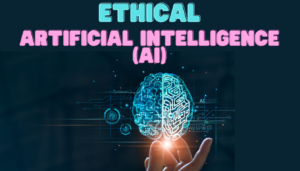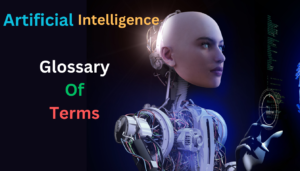Introduction
Artificial Intelligence (AI) has revolutionized various industries, but there’s one aspect of AI that remains relatively unexplored – generative artificial intelligence (GAI). This emerging technology has the potential to unlock new possibilities and create groundbreaking solutions. In this article, we delve into the world of GAI and discover its unveiled potential.
GAI refers to AI systems that can generate creative content autonomously, such as music, art, images, videos and even writing. By using machine learning algorithms, GAI can analyze patterns and data to create original and innovative outputs. This technology has already shown promising results, with Generative Artificial Intelligence-generated paintings selling for millions of dollars and AI-composed music becoming indistinguishable from human compositions.
As businesses and individuals seek to leverage the power of GAI, understanding its nuances and capabilities becomes crucial. We explore the ethical implications, practical applications, and challenges associated with GAI. Moreover, we discuss the importance of human supervision to ensure GAI operates within ethical parameters.
Table of Contents
How Generative AI differs from Traditional AI
| Aspect | Generative AI | Traditional AI |
|---|---|---|
| Definition | A subset of AI focusing on creating new content or data that resembles the training data. | Refers to algorithms and models designed to perform specific tasks, often based on rule-based systems and machine learning. |
| Primary Focus | Creating new, previously unseen data or content. | Solving specific problems or tasks with pre-defined rules or learned patterns. |
| Data Handling | Learns from a dataset to generate new data instances that mimic the original data. | Analyzes and learns from data to make predictions or decisions based on that data. |
| Output | Generates new content, images, text, or data that did not exist before. | Produces decisions, classifications, or predictions based on input data. |
| Applications | Content creation (e.g., art, music, text), data augmentation, and simulation. | Decision support systems, predictive analytics, automation of routine tasks. |
Generative AI differs from traditional AI in its ability to autonomously create content. While traditional AI systems are designed to perform specific tasks based on predefined rules and algorithms, generative AI goes beyond that. It can analyze patterns and data to generate original and innovative outputs, such as music, art, and even writing. Unlike traditional AI, generative AI has the capacity to be creative in its own right.
One key distinction between the two is the concept of autonomy. Traditional AI relies heavily on human input and supervision, while generative AI can operate independently, producing content without explicit instructions. This autonomy gives generative AI the ability to explore new possibilities and come up with solutions that may not have been considered by humans. It opens up a whole new realm of creativity and innovation.
However, with this autonomy comes ethical considerations that need to be addressed. As generative artificial intelligence gains more prominence, it is crucial to navigate the ethical implications associated with its use. The potential for misuse and the impact on human creativity and originality are some of the concerns that need to be addressed.
How Generative AI works
Generative AI works by utilizing machine learning algorithms to analyze patterns and data. It learns from existing content and uses that knowledge to generate new and original outputs. This process involves training the AI model on a large dataset, enabling it to recognize patterns and generate content based on those patterns.

To achieve this, generative AI uses techniques such as deep learning and neural networks. These algorithms enable the AI model to understand the underlying structure and patterns present in the data. By analyzing this information, the AI model can create content that is similar to the training data but with its own unique variations.
The process of generative AI involves several steps. First, the AI model is trained on a dataset that contains examples of the desired output. This could be a collection of artwork, music compositions, or even written text. The AI model then analyzes the patterns in the data and learns to generate content that is similar in style and structure.
Once the AI model is trained, it can generate new content by taking input from the user or by analyzing existing data. It uses the patterns it has learned during the training phase to create content that is unique and innovative. This process of generating content can be iterative, allowing the AI model to refine its output based on user feedback or additional training.
Ethical considerations in Generative AI
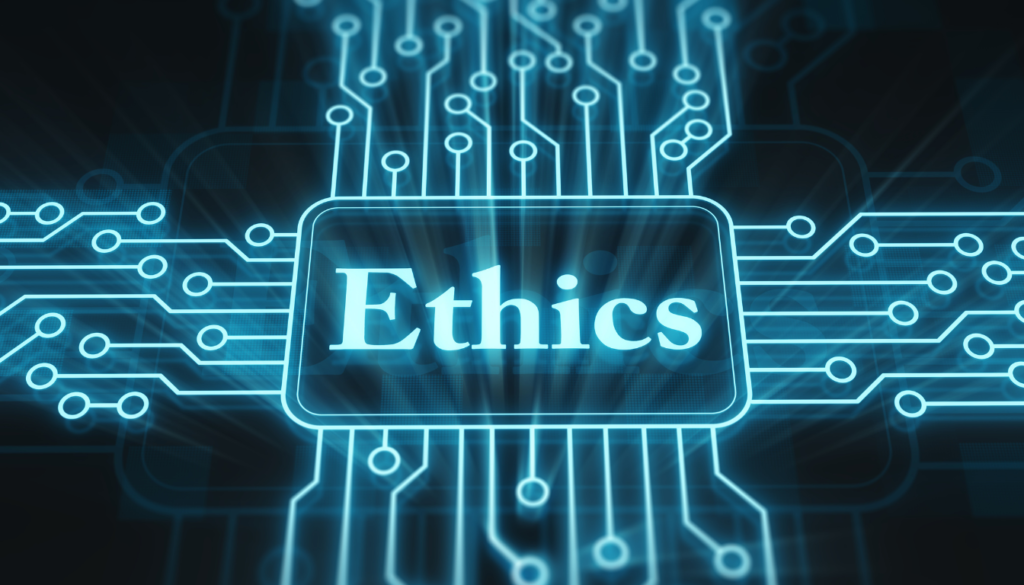
As with any emerging technology, generative AI comes with its own set of ethical considerations. One of the primary concerns is the potential for misuse or unethical use of generative AI. For example, there is the risk of plagiarism when AI-generated content is used without proper attribution. This raises questions about intellectual property rights and the originality of AI-generated work.
Another ethical consideration is the impact on human creativity and originality. If generative AI becomes too prevalent, there is a risk that human creativity may be devalued. The ability to create original and innovative content is a defining characteristic of human intelligence. If AI can replicate this ability, it raises questions about the value and uniqueness of human creativity.
Additionally, there are concerns about the biases that may be present in AI-generated content. AI models are trained on existing data, which means they can inherit the biases present in that data. This can have serious implications, particularly in areas such as art, music, and writing, where diversity and representation are important.
Understanding the potential of Generative AI
Art
Generative AI has the potential to revolutionize various industries and unlock new possibilities. One area where generative AI has already made significant progress is in the field of art. AI-generated artwork has gained recognition in the art world, with paintings selling for millions of dollars. These artworks are not mere imitations of human art but represent a new form of creativity that is unique to generative artificial intelligence.
Music
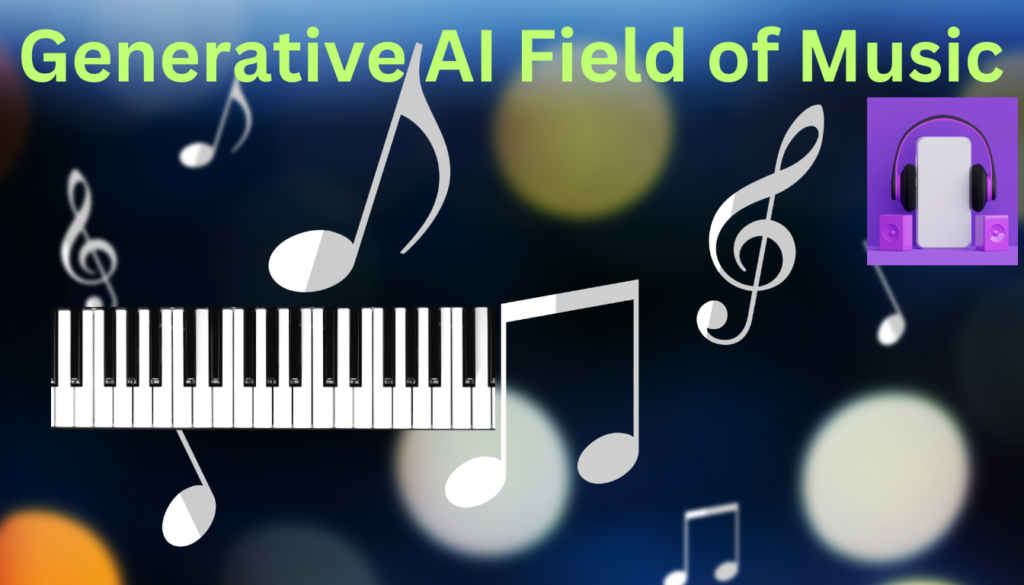
In addition to art, generative AI is also making waves in the field of music. AI-composed music has reached a point where it is becoming indistinguishable from compositions created by humans. This opens up exciting opportunities for musicians and composers to explore new genres and styles that were previously unexplored.
Personalized Content
Generative AI also has practical applications beyond the creative fields. It can be used to generate personalized content, such as product recommendations or news articles. By analyzing user data, generative AI can create content that is tailored to individual preferences and interests. This has the potential to enhance user experiences and improve customer satisfaction.
Virtual Assistants and Chatbots
Another potential application of generative AI is in the field of virtual assistants and chatbots. By using generative AI, chatbots can generate responses that are more natural and conversational. This improves the user experience and makes interactions with chatbots more engaging and effective.
Benefits of using generative AI
The use of generative AI offers several benefits across different industries. One of the key advantages is the ability to automate content creation. generative artificial intelligence can generate large volumes of content in a short period, freeing up human resources for other tasks. This can lead to increased productivity and efficiency in content creation processes.
| Benefit | Description |
|---|---|
| Innovation in Content Creation | Generative AI enables the creation of new, unique content ranging from art and music to text and images, fostering creativity and innovation. |
| Enhanced Personalization | It can tailor content and experiences to individual preferences, improving user engagement and satisfaction. |
| Efficiency and Cost Reduction | Automating the content creation process reduces the time and resources required, significantly cutting costs associated with manual content production. |
| Data Augmentation | Generative AI can create additional data for training machine learning models, especially useful in scenarios where data is scarce or expensive to obtain. |
| Exploration and Simulation | Allows for the testing of various scenarios and outcomes, especially beneficial in fields like architecture, game development, and scientific research. |
Generative AI can also enhance creativity and innovation. By exploring new patterns and generating unique content, it can inspire new ideas and push the boundaries of what is possible. This can lead to breakthroughs in various industries, including art, music, and design.
Furthermore, generative AI has the potential to improve personalization and user experiences. By analyzing user data and preferences, AI can generate content that is tailored to individual needs. This can lead to more engaging and relevant experiences for users, whether it’s personalized recommendations, customized marketing messages, or interactive virtual assistants.
Another benefit of generative AI is its ability to assist in data analysis and decision-making. AI models can analyze large datasets and identify patterns and trends that may not be immediately apparent to humans. This can help businesses make informed decisions based on data-driven insights.
Tools and Technologies for implementing GAI

Implementing generative AI requires a combination of tools and technologies. One of the key technologies used in generative artificial intelligence is deep learning. Deep learning is a subset of machine learning that focuses on neural networks with multiple layers. These networks can learn complex patterns and generate content based on those patterns.
Frameworks such as TensorFlow and PyTorch provide the necessary tools and libraries for implementing generative AI models. These frameworks offer pre-built models and algorithms that can be customized and trained on specific datasets. They also provide the infrastructure for running and deploying AI models at scale.
Generative AI models can be implemented using various neural network architectures, such as recurrent neural networks (RNNs), convolutional neural networks (CNNs), and generative adversarial networks (GANs). Each architecture has its own strengths and is suited for different types of generative tasks.
In addition to these tools and technologies, generative AI also requires access to large datasets for training. These datasets can be sourced from various publicly available datasets or created specifically for the task at hand. The quality and diversity of the training data play a crucial role in the performance of the generative AI model.
Applications of Generative Artificial Intelligence in different Industries

Generative AI has the potential to transform various industries by enabling new applications and solutions. In the field of art, generative AI is already being used to create original artworks that are generated by AI models. These artworks are not only visually stunning but also represent a new form of creativity that blurs the line between human and machine.
In the music industry, generative AI is being used to compose music that is indistinguishable from compositions created by humans. This opens up opportunities for musicians and composers to explore new genres and styles that were previously unexplored. It also allows for the creation of personalized music experiences based on individual preferences.
Generative artificial intelligence is also finding applications in the field of design and fashion. AI models can generate unique and innovative designs based on user preferences and trends. This can help designers and fashion brands create new collections and offerings that resonate with their target audience.
In the field of content creation, generative AI can be used to automate the generation of articles, blog posts, and other written content. By analyzing existing content and user preferences, AI models can generate new and relevant content that meets the needs of the audience.
Challenges and limitations of generative AI

While generative AI holds immense potential, it also faces several challenges and limitations. One of the key challenges is the need for large and diverse datasets for training. The quality and diversity of the training data directly impact the performance and creativity of the generative AI model. Obtaining and curating such datasets can be a time-consuming and resource-intensive process.
Another challenge is the potential for biases in AI-generated content. AI models are trained on existing data, which means they can inherit the biases present in that data. This can have serious implications, particularly in areas such as art, music, and writing, where diversity and representation are important. Addressing these biases requires careful consideration and oversight.
Generative artificial intelligence also faces challenges in terms of interpretability and explainability. AI models generate content based on complex patterns and algorithms, making it difficult to understand the underlying decision-making process. This lack of interpretability can be a barrier to adoption, as users may be hesitant to trust AI-generated content without understanding how it was created.
| Challenge/Limitation | Description |
|---|---|
| Data Quality and Bias | The output quality of generative AI models is heavily dependent on the quality of training data, which can also perpetuate biases if the data is not carefully curated. |
| Computational Resources | Generative AI models, especially those that are highly complex, require significant computational power and resources, which can be a barrier for smaller organizations. |
| Ethical and Legal Concerns | The creation of realistic images, texts, and videos raises ethical questions regarding authenticity and copyright, as well as potential misuse for deceptive purposes. |
| Originality and Creativity | While generative AI can produce content that mimics human-created works, there are concerns about whether it can truly replicate human creativity and originality. |
| Interpretability and Control | As AI models become more complex, understanding how they generate certain outputs and exerting control over the process can become challenging, raising concerns about predictability and safety. |
Additionally, there are concerns about the potential for AI to replace human creativity and originality. If generative artificial intelligence becomes too prevalent, there is a risk that human creativity may be devalued. It is important to strike a balance between the capabilities of AI and the unique qualities that humans bring to the creative process.
Future prospects and advancements in generative AI
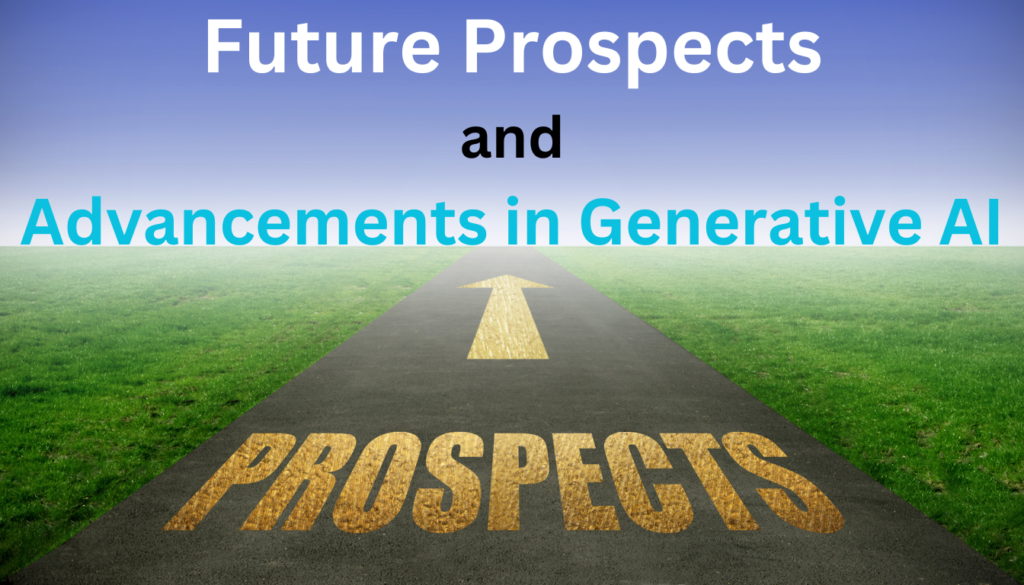
The future of generative AI holds exciting prospects and advancements. As technology continues to evolve, we can expect AI models to become more sophisticated and capable of generating even more innovative and realistic content. Advancements in deep learning and neural networks will drive the progress of generative AI, enabling it to create content that is indistinguishable from human creations.
In the field of art, generative artificial intelligence has the potential to redefine traditional notions of creativity and originality. AI-generated artworks are already gaining recognition in the art world, and we can expect this trend to continue. The fusion of human creativity and generative AI has the potential to create entirely new art forms and experiences.
In the music industry, generative AI can push the boundaries of what is possible in terms of composition and performance. AI models can generate music that is not constrained by traditional structures or genres, opening up new possibilities for musicians and composers. This can lead to the creation of entirely new genres and styles of music.
Generative AI also holds promise in the field of design and fashion. AI models can generate unique and innovative designs that reflect user preferences and trends. This can revolutionize the way designers and fashion brands create and produce their offerings, enabling more personalized and tailored experiences for consumers.
As generative AI continues to evolve, it is crucial to address the ethical considerations and challenges associated with its use. Establishing guidelines and frameworks for responsible use, addressing biases, and ensuring human supervision and oversight are essential to ensure the ethical and responsible deployment of generative AI.
Conclusion
Generative artificial intelligence (GAI) represents a new frontier in the world of AI and creativity. It has the potential to unlock new possibilities, revolutionize various industries, and challenge traditional notions of creativity and originality. By leveraging machine learning algorithms, GAI can generate content autonomously and create groundbreaking solutions.
As businesses and individuals seek to leverage the power of GAI, understanding its nuances and capabilities becomes crucial. We have explored the ethical implications, practical applications, and challenges associated with generative artificial intelligence. It is important to navigate these considerations carefully and ensure that GAI operates within ethical parameters.
Generative AI is not a replacement for human creativity but rather a tool that can enhance and inspire new ideas. By embracing the power of generative AI, we can unlock the future of creativity and innovation. The limitless possibilities of generative artificial intelligence await those who are willing to explore and harness its potential. Let us embark on this journey together and discover the unveiled potential of generative artificial intelligence.
FAQ
What is Generative AI?
Generative AI refers to a subset of artificial intelligence technologies that can generate new content, data, or information that resembles the training data. It includes creating text, images, music, and more, using advanced algorithms like Generative Adversarial Networks (GANs) and Variational Autoencoders (VAEs).
How does Generative AI work?
Generative AI works by training on a large dataset to learn the underlying patterns, structures, and features. Once trained, it can generate new, unique outputs that mimic the original data. Techniques like GANs involve two networks (a generator and a discriminator) competing against each other to improve the generation process.
What are the applications of Generative AI?
Generative AI has a wide range of applications including but not limited to content creation (e.g., art, music, writing), image and video enhancement, creating realistic training data for machine learning models, personalized marketing content, and simulation environments for research and development.
What are the ethical concerns associated with Generative AI?
Ethical concerns include the potential for generating misleading or harmful content, copyright issues related to generated works, privacy implications of using real data for training models, and the societal impact of automating creative jobs. There’s also the risk of its use in creating deepfakes.
Can Generative AI replace human creativity?
While Generative AI can produce content that is increasingly complex and realistic, it does not possess consciousness or emotional intelligence. Thus, it complements rather than replaces human creativity, serving as a tool that can enhance and inspire human-driven creative processes.
How can one get started with Generative AI?
To get started with Generative AI, one can begin by exploring foundational concepts in machine learning and deep learning through online courses and tutorials. Practical experience can be gained by experimenting with open-source libraries like TensorFlow and PyTorch, and by participating in projects or challenges on platforms like Kaggle.

